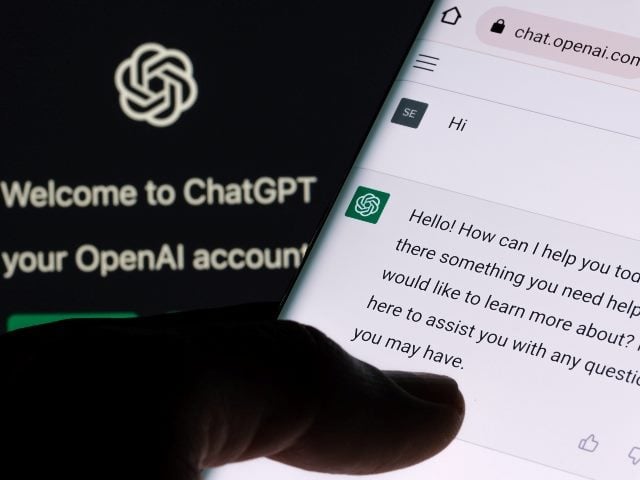
How much time did it take to write descriptions for the 353 million products sold by Amazon and its third-party sellers? Over a billion hours? And at what cost?
I wondered this while asking ChatGPT, the natural language processing chatbot from OpenAI, to write up product descriptions. Whether I asked it to describe my car, bicycle, or favorite shoes from New Balance, ChatGPT did a shockingly decent job.
Granted, ChatGPT has done much harder writing. Experimenters have made it compose original music, outline and write a 300-page book on financial literacy in one day, and pass a 12th grade AP Literature essay assignment. Some filmmakers even used it to write and direct a short film.
Marketers and Ecommerce Teams: Dive Into Generative AI
Why wouldn’t product marketers and ecommerce teams use ChatGPT, Frase, or Jasper to write the descriptions, social posts, and even video scripts for new products? Why not let Synthesia.io turn the script into a video explainer performed by the avatar of a professional actor? And why not let DALL·E 2, an image generator from OpenAI, depict people or characters using the product?
Generative AIs could create the next 353 million product descriptions on Amazon (and elsewhere) in a tiny fraction of the time the first 353 million required. However, the copy will only be as accurate and as specific as the input marketers give the AI.
Many product marketing and ecommerce teams have their product information — names, dimensions, weights, colors, sizes, compatibilities, feature lists, materials, etc. — stored in siloed spreadsheets that constantly fall out of date. The photography and images for those products tend to be scattered in shared folder systems. These conditions would make it impossible to feed product information to AIs in an efficient way. Thus, product information management (PIM) systems, which centralize all the data, content and information relevant to marketing a product, will be crucial for using generative AI.
To illustrate, let’s explore how ChatGPT could radically change the way marketers produce product content from product information.
ChatGPT Use Case: Inventing a Product
To begin, we need a brand and product to play with. ChatGPT can help:
Ugh…it didn’t capitalize that first “e” in the last sentence! But in seconds, ChatGPT created a brand and description better than what 99% of human beings would create in 30 minutes.
Let’s introduce our first game-changing product. Based on some key points from our (imaginary) PIM system, ChatGPT can draft a preliminary description:

Notice that ChatGPT inferred the value of the WhisperQuiet motor, oak surface and especially the ErgoAI. I didn’t tell it that the automatic adjustment would spare users from “fidgeting” with the controls. ChatGPT also used “elevate” as a pun in the last sentence. Amusing.
For a solid product listing, we’ll need a spec list. Hypothetically, I’d copy-paste the raw info from a PIM system. Let’s simulate that:

Notice that ChatGPT made up things about the desk, like the power outlets and cable management system (which, frankly, should be included with this product). Human oversight is important here. Also, notice that ChatGPT suggested specs I probably wouldn’t have considered adding, like the adjustment speed.
Related Article: ChatGPT’s Impact on Customer Experience and Marketing
ChatGPT Use Case: Personalizing the Content
For years now, marketers have expected the combination of customer segmentation and content personalization to be a holy grail in driving purchases. But to write individual descriptions for, say, 20 customer segments would have been prohibitively time-consuming. Now, though, we can tell ChatGPT to tune a product description for any segment we want, in seconds. Using the ElevateDesk ONE again:

ChatGPT realized that the quiet motor might be ideal for open office spaces where a noisy desk can disrupt people. It also recognizes that standing desks are relevant to back pain and posture.
Shall we try another segment for comparison? Now that so many technology employees work remotely or on a hybrid basis, we need a product description to target them too:

It’s wordy and dry, no? How about a more casual tone and tighter word limit:

Better. And we just showed that ChatGPT can write according to a set of brand guidelines.
Given accurate product information from a PIM and descriptors from a customer segment, ChatGPT can clearly personalize content. The degree of personalization will depend on the extent and quality of the customer data a brand has collected.
DALL-E 2 Use Case: How About Images?
Generative AI for sophisticated product imagery may advance slower than text. In the near term, I’d expect AI to automatically crop and reformat existing imagery for different channels: thumbnails, 16×9 headers, email blasts, social posts, and so forth.
But could AI generate original images for product marketing? I asked DALL-E 2 for, “An adjustable, electric standing desk called ‘ElevateDesk ONE’ with an oak surface. A 30-something technology worker with glasses and a warm smile is behind the desk.” The images are terrible:

Had I provided DALL-E 2 with an actual image of the desk and a human model (or a better description of a model) perhaps the outcome would be better. Or, at least, good enough for an Amazon product listing.
Age-Old Question: Who Benefits From This Content?
Product marketing and ecommerce teams will use AI to generate product content at mass scale with an eye toward personalizing it for customer segments and, eventually, individuals. PIM systems will provide the information and structure to do this in a fast, repeatable workflow that stores the content where other systems (ecommerce syndication, marketing automation, CMS, CRM, etc.) can draw upon it.
But as brands flood the field with AI content, who will read it?
The more AI-generated text there is on the web, the more that people may lean on AI to parse that content. Why would people browse websites or product listings one by one when an AI could find the top three standing desks that meet their needs, in seconds?
If ChatGPT is integrated with a search engine like Bing — likely Microsoft’s plan — we’ll have a scenario where ChatGPT shops for a standing desk on behalf of the user and makes recommendations based on product descriptions it wrote.
A strange twist in SEO, no? The next 353 million product listings on Amazon might have a new audience to captivate: ChatGPT.







